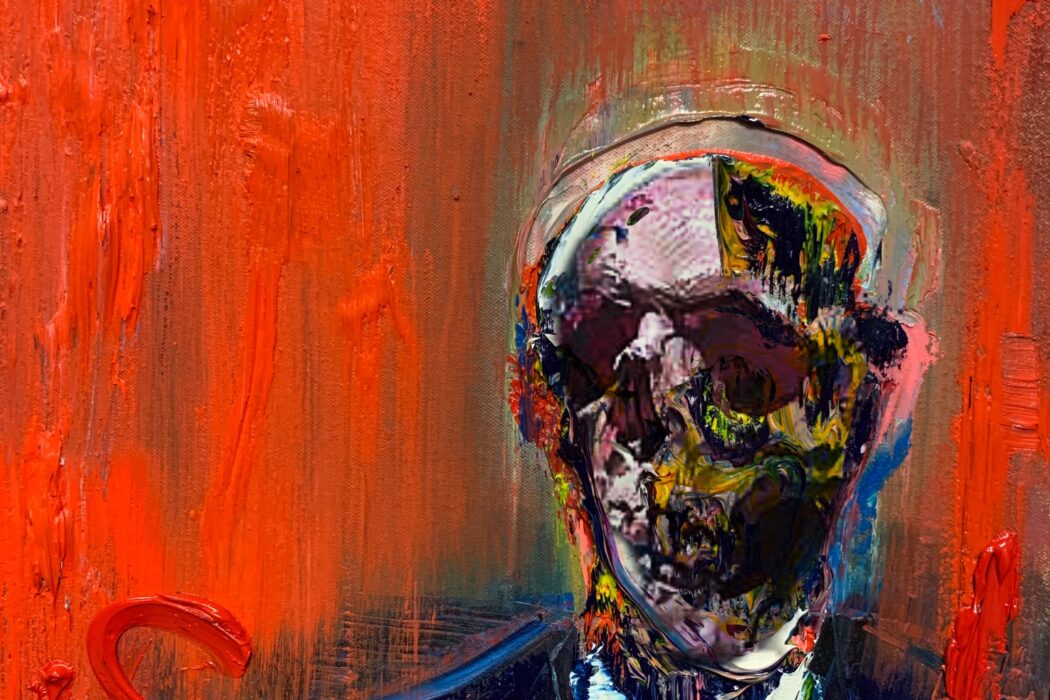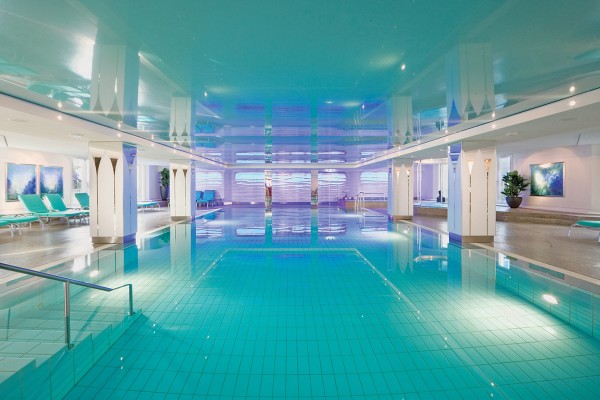Confrontational, disruptive, yet unmissable, Lincoln Townley’s paintings have placed him firmly at the front and centre of the British contemporary art scene for the past ten years.
Often outspoken when it comes to cryptocurrency and synonymous with high society and celebrity collector’s, Townley is no stranger to the world of money and its symbiotic relationship with art. His latest series of paintings – 100 Bankers – will feature at 2022’s Venice Biennale. It sees the artist delving into the world of international banking corporations, albeit via a collection of visceral portraits reminiscent of Francis Bacon’s Screaming Popes. Despite the often challenging nature of the portraits, gathered together they unmistakably display the confidence and vision of a unique artist at the peak of his powers.
READ THE ARTICLE IN THE SPRING EDITION HERE
We caught up with Townley for a mid-morning chat to discuss the series, and despite the often dark and grotesque nature of his paintings, he is clearly in an affable and talkative mood. Lockdown has suited the artist, whose online savvy has seen his reach and sales figures rise as a result of the restrictions. The art world is changing fast, according to Townley, and he’s determined to place himself firmly on the cusp of its evolution.
You’ve described your new collection, 100 Bankers, as exposing ‘the acceptable face of greed’ – what are you trying to unmask and why is it so important?
Actually, I don’t see this collection, or the idea behind it, as controversial as many people seem to. In fact, I have an absolute fascination with greed, and this series is about seeing the banking community as one which thrives on greed and manipulation. I created one hundred portraits of banker’s heads, each one representing the world’s top banks, and the notion was to put a face to something that can’t be easily explained.
Anyone who knows the banking system recognises what a labyrinth it is, and how traditional banking has this way of completely manipulating people without ever really letting them see the full picture. At the end of the day, this question is best answered by seeing the paintings themselves, and getting the impact that art creates. My work tends to be very visceral – it often features screaming heads, skulls, and elements of horror. It’s hard to look at, but it gets its message across.
Different things are created in different times for different reasons. Why is 100 Bankers so pertinent to 2020/21?
More than ever, we recognise that banks are so greedy, and they go to such an extreme when it comes to manipulating the whole of the human race. However, it’s all done so simply, and they manage to do it while hiding in plain sight. My aim with this series was to manipulate the image from that concept and that feeling – that’s why the paintings are what many people would consider horrific.
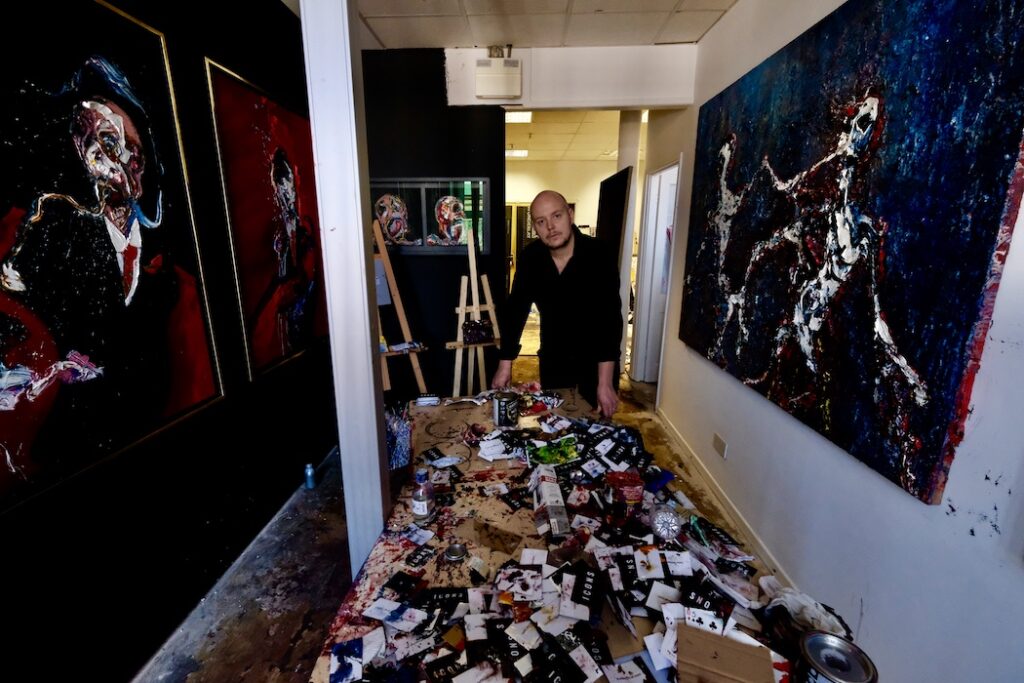
We’re actually going to be showing this series at next year’s Biennale. The show will be set up with one side of the exhibition showing the paintings mounted on a wall, and the other side will feature a digital representation of them – the paintings as NFTs. People will be able to view the paintings with AR technology, blurring the lines between the two.
Why do you think people are so oblivious – or indifferent – to the way banks get away with this? How do banks keep the wool pulled over people’s eyes?
Because people are preoccupied with survival. They don’t have the luxury of being able to slow down.
What does this say about governments who quite evidently protect the banking industry? Be frank, what’s going on?
The divide between the rich and the poor is the most extreme it has ever been, and this isn’t going to change any time soon. What’s more, those at the top – the bankers, the politicians, and the super-rich like Bezos and Musk – have absolute influence over people. They’re not going to act against their own interests, and they’re always going to do what they need to do to protect this status quo.
Elon Musk, for example, has been creating his own NFTs. His branding is so powerful that people look at him, see that he’s a billionaire, and decide to buy into whatever he’s selling. Ultimately, people need to do what they’re doing to survive, and that means that most people aren’t going to ask too many questions, and those at the top aren’t going to start being more transparent.
How does your fascination with these subjects feed into your approach to working?
There’s a huge amount of opportunity for artists when it comes to blockchain – I’m working at the moment to launch a new project, Cryptoartists. I want to open up a democratic network for artists, who will be free to upload any images they’re creating digitally, and market and sell them via the blockchain. It’ll allow artists to reach a global audience instantly, and sell their work for a fair price. It’s about hacking into a whole new approach to buying and selling art, as the traditional model just isn’t working anymore.
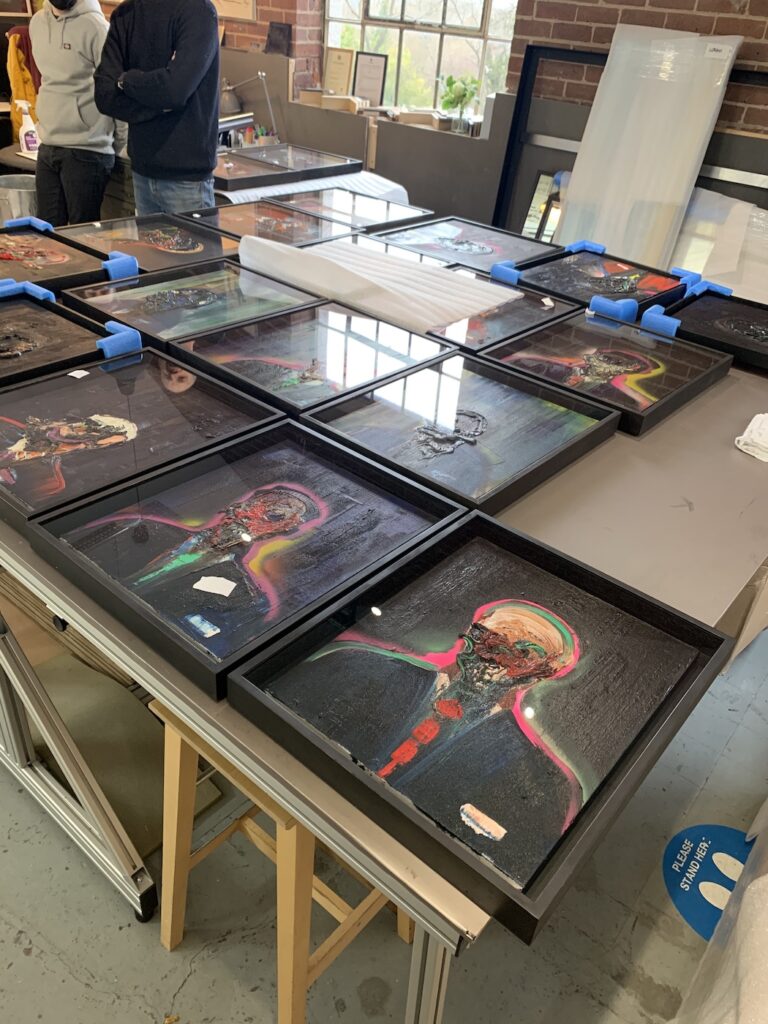
How does this body of work compare to others?
This is a much more personal collection. They’re smaller portraits, but gathered together, they make a much more powerful impact.
When you look at all these faces together, there’s a personal connection – my other works, which tend to be much larger, have more of a distance about them. Even though they’re not self-portraits by any means, there’s a reflective quality to 100 Bankers. They have an essence of myself in them, they reflect my fascinations.
What’s the response been like to this work? Have there been any eyebrows raised from those in the banking industry?
It’s astonishing. The faces of the hundred bankers we’ve created have been made into NFTs, and we’ve just sold ten of the NFTs to a buyer in Singapore, who works in a financial institution.
I was talking on Instagram a while ago about selling the art in NFT form, and pretty quickly I started hearing from people in the world of finance asking if I could represent them. There’s a real irony to this – we’ve digitally manipulated these portraits, turning them into their own assets, and they’re being sold to people in financial institutions. These aren’t paintings you can hang on the wall – there’s nothing tangible about them. They’re images in JPEG form that I’ve made on my iPad. Incredible.
So, the very people you’re calling out might be the ones who typically buy your artwork? How does that feel?
They are often literally the same people. Greed is a remarkable energy and an incredible driving force. I actually don’t see it as a negative energy, and I can’t get away from the fact that the people who buy my work are those who typically enjoy what we regard as greed.
I sometimes feel that when my clients buy these smaller pieces, it’s as if they’re looking in a mirror. One of them sent me a selfie with one of these paintings in the background – that says it all!
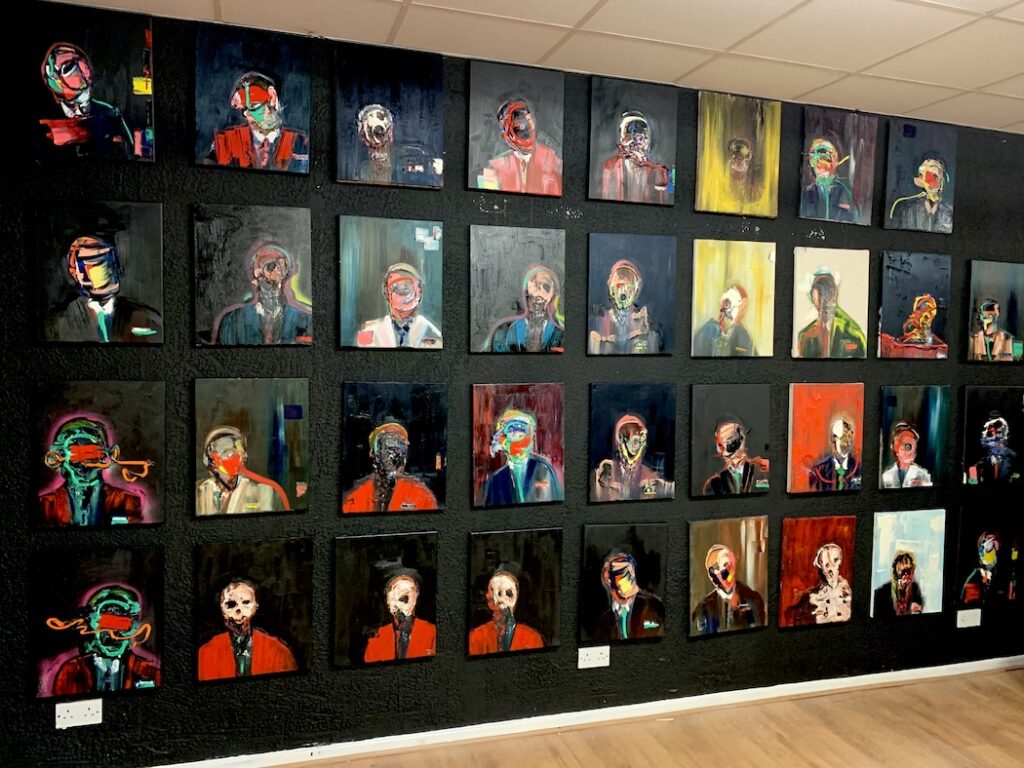
Aside from your work, how has lockdown been for you?
Very, very interesting. When the first lockdown started, I had a show booked in Los Angeles that we’d done a lot of work preparing for, and as soon as it was clear that it wasn’t going ahead, we had to be agile and find a way to sell the works online. I’ve always been very into using social media and various digital platforms, but last year proved that things had to be taken further. I spent the first three months creating a new type of digital gallery, and it garnered a huge amount of interest.
The main thing I noticed was that I could just get more done. People suddenly had a lot more free time, and with that came more focus and an essence of survivalism. Frankly, I’m not a hugely social person anyway, so from my personal point of view, I was perfectly happy being at home. It raised plenty of opportunities, it helped me grow, and I’ve been content with it.
The impact of lockdown on the world of art hasn’t received much press. How does it look from the inside?
Firstly, I’m not what you would call an ‘arty’ person. I deal with creating my own art world, as there’s a lot of hostility towards artists who buck the trend, and very little support for those outside the traditional model.
There’s no doubt that galleries have struggled, as nobody has been walking into them and buying art. However, in these situations you’ve got to be agile. I’ve found that my collector base has doubled throughout lockdown, and that’s come about as a result of being digitally imprisoned. In fact, my last show was at the Saatchi in October, between the lockdowns. Even then, more of my work sold online rather than via collectors coming into the gallery to see the work.
This really made me think: why not channel the energy that goes into making these shows into a digital space, where things like cryptocurrencies can be embraced? I’ve managed to move forwards by embracing digital art, while many traditionalists have really struggled finding their motivation during this period.
Art is a very financial world, and it’s driven by auctioneers who are only interested in money, and motivated by artists who want to sell their work. I decided a long time ago that I want to market my own work, deal directly with my collectors, and get out of that stuffy world of auction houses and the traditional system.
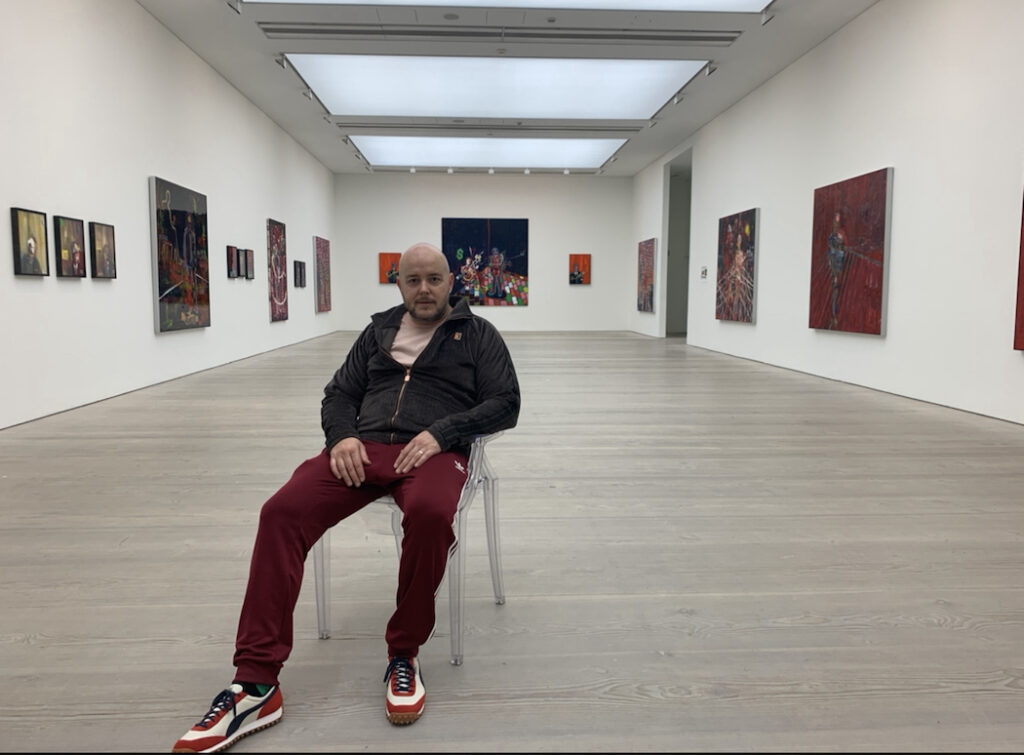
You’ve been involved in cryptocurrencies for a number of years – but it sounds like lockdown has forced you to be more creative with digital currencies and technology to run your business and sell your work. How has this been, and has it changed your opinion on more traditional ways of reaching people and doing business?
I’m utterly fascinated by cryptocurrencies. It’s partly why I’ve been so keen to combine art with NFTs – it’s exciting to be able to create assets that collectors can hold in a digital wallet, and that can be traded. It really opens up a bigger world for artists and represents a huge opportunity. I honestly believe that if people embrace these new technologies and run with them, they’re going to get something from them.
It’s an interesting time for crypto, and the market has boomed primarily as a result of more people spending time online this year than ever before. There’s still a lot of naivety surrounding it, though, and that’s something I’m tackling in the art world. For example, I know that a lot of my audience uses crypto, but when I advertise a work for three Bitcoin, for example, there are always people outside of the crypto scene pushing me to tell them what it’s ‘actually’ worth. It’s worth three Bitcoin! We’re right at the very beginning of this new approach to finance, but there’s still a huge amount of resistance from the banks, as crypto is unregulated, and this translates to the public.
I believe it’s a matter of branding. As soon as the retailers start accepting crypto, and you have some trusted institution like Marks and Spencer saying it’s okay, people’s minds will change overnight.
The world is changing faster than ever – do you already have inspiration for your next work?
My next collection will be purely digital. It will be a journey of my ten years in the art world, from 2012 to 2022, and will cover all of my collections, manifested into a digital offering. It will be solely available to my collector base, so they won’t just be buying the work – they’ll be buying into the journey.

